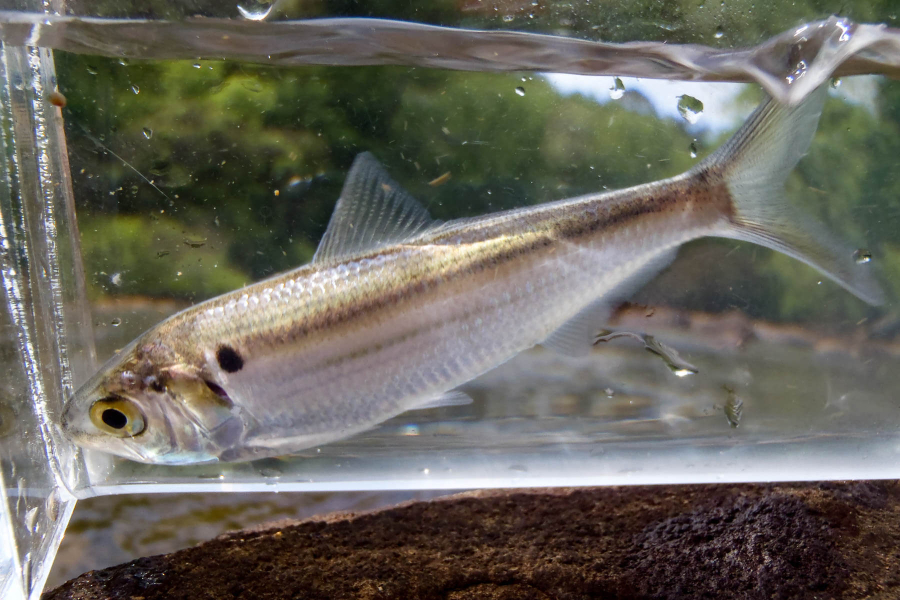Making way for the blueback’s comeback
Efforts are underway to restore the endangered herring’s population

Every year in late spring, schools of blueback herring (Alosa aestivalis) pour into the Chesapeake Bay from the Atlantic Ocean. They are headed for the Bay’s freshwater tributaries, where they will spawn before returning to the ocean. Some have traveled hundreds of miles to get there, seeking out the very breeding grounds where they were born.
However, many blueback herring are returning to their historic breeding grounds to find them completely inaccessible, or even destroyed.
Threats to the blueback
Since 1970, the number of blueback herring reported in the Bay has dropped dramatically. This decline has been tied to increased urbanization and agricultural practices throughout the Bay watershed. Rapidly expanding development has led to increased sediment and nutrient flow into the Bay, which has hindered the growth of underwater grasses which is valuable spawning habitat for blueback herring.
Human-built structures such as dams and road crossings also play a role in the decline of the blueback herring. These structures impede the herring’s migratory paths, cutting off adult herrings from their historic breeding grounds. The blueback herring’s reproductive cycle depends on its ability to move freely between marine and freshwater environments. If adult herrings cannot find a healthy freshwater river in which to spawn, they will not reproduce.
Juvenile blueback herring already suffer unusually high rates of natural mortality, with less than 1% of all juveniles surviving their journey from the Bay to open ocean. With poor water quality, obstructed migration paths and a heavily restricted breeding habitat, the blueback herring’s future in the Bay is uncertain.
Preparing for a comeback
The good news is that progress is already underway to restore this endangered species. In 2014, the Chesapeake Bay Program committed to restore migratory fish routes by removing dams and other physical obstacles that prevent fish from returning to their historic spawning sites.
Between 2012 and 2017, over 1,200 miles of rivers and streams throughout the Bay watershed were opened to fish passage. In 2018, a major obstacle to the blueback herring’s success was overcome with the removal of the Bloede Dam, the defunct hydroelectric dam that sat downstream on the Patapsco River. Its removal opened up access to 65 miles of potential herring breeding grounds.
There is still work to be done in restoring the blueback herring population. However, experts are optimistic that blueback herring will find their way back to their historic breeding grounds—and increase their populations when they do.

Comments
Thanks Dylan. You’re my hero.
Thank you!
Your comment has been received. Before it can be published, the comment will be reviewed by our team to ensure it adheres with our rules of engagement.
Back to recent stories